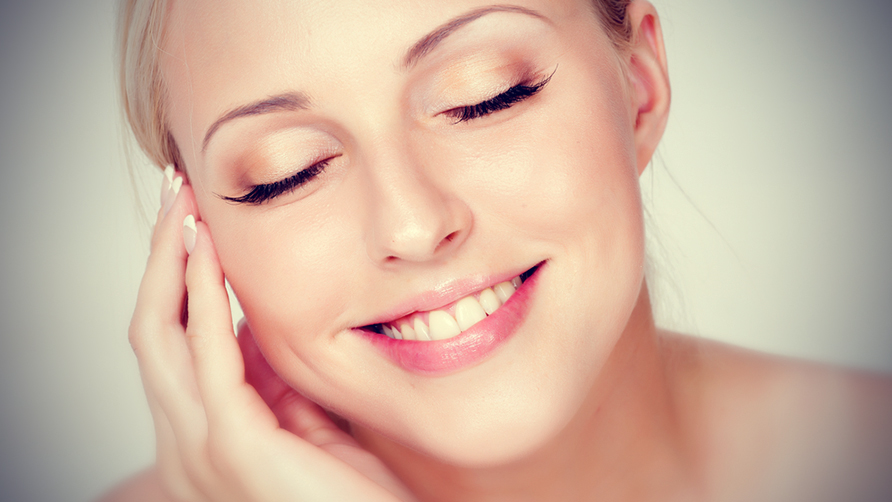When you go for a facial, such as at Planet Beach, your esthetician will likely perform an initial skin analysis before performing the procedure. Skin analysis is the part where the esthetician covers your eyes, usually with cool cotton pads, and examines your skin under magnification – a brightly-lit mag lamp. It’s a crucial part of a safe and effective facial since it determines your skin type and conditions that, in turn, will be used in making decisions about your treatment, both in the spa and at home.
Why It’s Done
While a good esthetician can quickly make a determination of your skin type and conditions without using a mag lamp, a skin analysis is still a must – many skin conditions aren’t easily seen by the naked eye. The esthetician will be able to confirm your skin type – normal, oily or combination skin – as well as determine areas with breakouts, dry and dull skin, and sensitive skin, as well as take a closer look at fine lines and wrinkles.
You, on the other hand, will likely be asked to complete a skin analysis form. Don’t worry as the questions aren’t too personal – just your skin history and concerns, diet and medications, among others. These questions are designed to determine why your skin is the way it is now and what can be possibly done about it starting with an effective facial.
How It’s Done
Be sure to come into the spa with a clean face – wash your face with lukewarm water and mild cleanser, and don’t apply makeup so that the esthetician can get right to work. When you’re on the table, your hair will be wrapped with either a headband or a towel to get stray hairs out of the way.
You will then be on the receiving end of a thorough cleansing even when you’ve already cleaned your face beforehand. The thorough cleaning, usually done with cotton pads, sponges or wipes, will remove all traces of makeup and, thus, reveal uneven skin tone, blackheads, and broken capillaries, among others. Don’t worry about being barefaced in front of a stranger – you won’t be judged for the flaws in your skin condition and, in fact, the esthetician is there to address them.
During the cleansing process, you shouldn’t be surprised when your esthetician will feel your face, so to speak. This is to determine the smoothness or roughness of your skin, its moisture level (i.e., dryness), and its bumps and breakouts, as well as their firmness or sagginess in areas. You may also easily turn reddish from your skin being touched with slight pressure, a fact that the esthetician will consider during the facial proper.
The in-depth skin analysis itself takes place with the use of a magnifying lamp equipped with a bright light, also known as a loupe. Don’t worry about the glare as your eyes are still covered with the cotton pads. The loupe allows the esthetician a clear view of your skin including the small details the naked eye can’t see and the conditions masked by makeup.
Be prepared for a few minutes of close examination of your face but it isn’t uncomfortable, far from it. The esthetician will take a good look at every part of your face, an examination that will obviously include touching your skin and moving your head from side to side. There’s no direct skin-to-skin contact, however, as the esthetician wears gloves.
The esthetician will also tell you what he/she sees, such as your skin type and its condition as well as the ways that it can be improved. You may be asked a few questions, such as whether a blemish has been there just recently or for a longer time and what you did about it. Your esthetician may also recommend a dermatologist to look at your skin, if needed; a facial is done to primarily cleanse, tone and condition the skin so it appears healthier and younger, not to treat underlying dermatological conditions.
What exactly does an esthetician look for during the skin analysis?
- Your skin type, which is primarily based on the amount of oil (i.e., sebum) produced by your skin. Yes, it’s largely determined by genetics but it also changes over time, such as in terms of color, dryness and suppleness due to natural aging and/or excessive skin exposure.
- To a certain extent, your skin type will determine the products and treatments that will be used during your facial. The esthetician, for example, will choose facial products for combination skin, if you have it.
- Your skin conditions, such as blackheads and whiteheads, pimples, wrinkles, dehydration, sun damage, rosacea and poor elasticity. This is important since not all of these skin conditions can be treated or managed with regular facials, such as rosacea; whiteheads and blackheads, however, can be extracted during the facial. The esthetician will also adjust the pressure used when your skin shows signs of broken capillaries or a tendency to easily become reddish.
The skin analysis will, indeed, reveal that our skin isn’t as simple as it seems on the surface. Let the esthetician do his/her job then so you can get better results.
